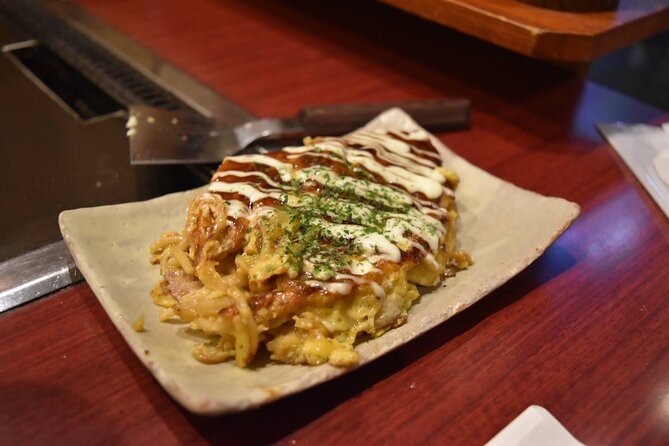The Japanese have taken the concept of the convenience store (“kombini” in Japanese, short for “kom-bini-ensu sutoa”) and refined it into a concept that might surprise people familiar with the company overseas. They’re clean, the staff are friendly, and they’re every hundred meters or so, at least in Tokyo, where I live. My friends who come to Japan are always amazed by the variety of foods in the typical Japanese kombini — much of it healthy, and most of it actually tasting good.
“Oden,” for example. People who live in Japan know winter has arrived when they smell the aroma of oden wafting out of the local kombini. These delicious doodads swimming in broth — tofu, boiled eggs, daikon radish and other vegetables, “kamaboko” (fish paste formed into tubes, balls, discs, etc), fish cakes and other things — are totally addictive.
There’s always a whole section of “onigiri,” or rice balls, sometimes an entire cooler section full of them. Often, there are two-dozen different kinds of onigiri in a given store. The rice balls (actually, they’re mostly triangular) usually come wrapped in seaweed and contain a little morsel as a filling, like “okaka” (bonito flakes in soy sauce), “tarako” (grilled fish egg sac) or grilled salmon. For those who like their rice balls a little more extreme, there are onigiri with ume (sour pickled plum), mentaiko (spicy fish roe), even Spam. Sometimes they’re barbecued or wrapped in bamboo leaves, or dyed day-glo pink or green by whatever’s in them, but they’re always delicious.
Other things I love about the corner kombini:
- “Manju” – Chinese steamed buns with names like superheroes — Pizza-man (pizza filling), An-man (sweet bean paste, my son’s favorite), Veggie-man (my wife’s favorite, so the kids call it Mama-man), Nikku-man (spiced pork), and Sukiyaki-man.
- Tea – The stores all seem to have 20 or 30 different kinds, hot and cold, and the variety is ever-changing and seemingly infinite — hot and cold, PET bottles and metal cans, green and black tea, oolong, sokembi and English afternoon tea, sweetened and un-, milk or not, and my personal favorites, mugi (barley) and soba (buckwheat).
- Health food – You can actually eat healthily out of the local 7-Eleven. Soba (buckwheat noodles) in a dipping sauce, six kinds of tofu, yakitori (grilled chicken on a skewer), the aforementioned oden, and “edamame” (green soybeans, boiled, salted and delicious), to which I’ve been addicted since my first day in Japan. Also instant noodles — the kombini near my place (a small one) has 30 or more different types.
- Junk food – When I first came here, I couldn’t believe the variety of potato chips – soy sauce flavor, seaweed flavor, curry, shrimp, squid, soybean (these ones are actually shaped like beans,) and chili in a range of heats. And I guess just in case they missed anybody, the intriguingly generic Ethnican flavor (it tastes like it sounds).
- Crazy beer snacks – Squid, dried and shredded or whole with the tentacles still attached, individually wrapped shards of dried kombu seaweed, dried fish with the guts still in (you gnaw them), smoked quail eggs, and lurid red octopus tentacles, tough as an inner tube, that you can’t even bite through — you just have to keep working at them. The first time I tried some of these I nearly gagged, but it just goes to show how Japan changes you, that when I was in the United States recently, I actually found myself craving a nice tentacle.
Much of this variety and quality is thanks to Seven-Eleven Japan, whose aggressive dominance of the market has forced its rivals — Lawson, Family Mart, Circle K, and Sunkus are the big ones — to innovate in a hurry just to stay in the game. The company’s extremely efficient inventory control system sets the standard for the industry — their proprietary point-of-sale system lets management know almost down to the individual noodle what is selling well and what is languishing.
This system is good, because what most people want is always on the shelves. But it’s a little unsettling at times too — the speed of product turnover is incredible, and anything that doesn’t move is mercilessly yanked from the shelves. So you can find yourself unable to get that new lemon water you’ve gotten so fond of in the last week, and asking a staffer (there’s quite a turnover of them too) and she’s never heard of it. Which maybe goes to show that I’m a bad consumer who can’t get with the program, but I miss my lemon water.
You can do other things besides eat at your local kombini. You can buy movie tickets, book tours, and receive mail order deliveries. They serve as pickup and drop-off points for the “takkyu-bin” delivery services (another amazing feature of life in Japan), as a source of directions when you get lost (most have a big plasticized map of the neighborhood), and as handy landmarks — the streets are so confusing that many taxis won’t go to your home, but they will go to the nearest kombini, and since they’re so ubiquitous you probably won’t have to lug your bags very far.
No wonder kombini have become the center of many Japanese neighborhoods.




